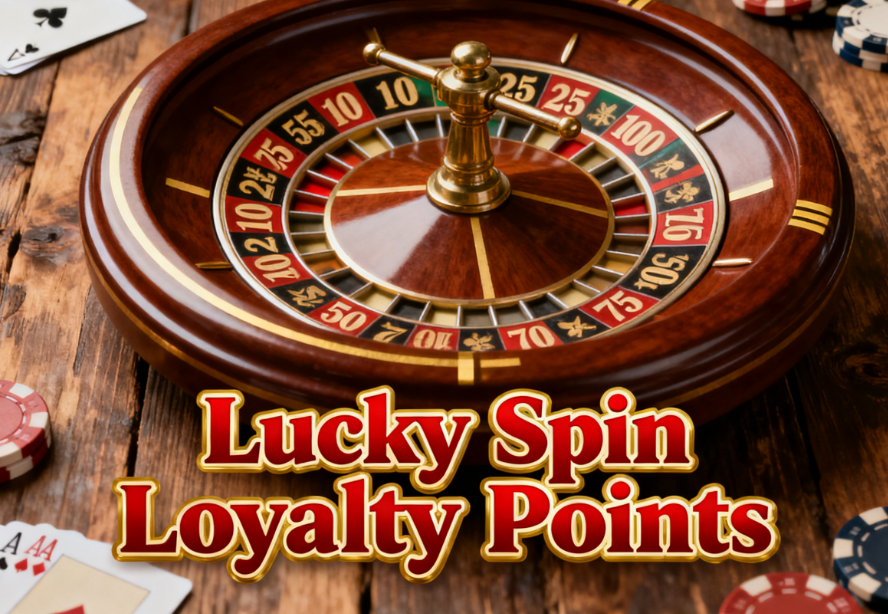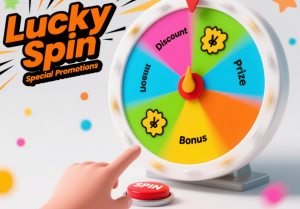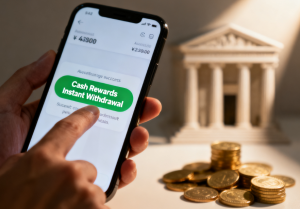In the hyper-competitive world of online gaming and digital platforms, retaining players is just as critical as acquiring them. Traditional reward systems—static points, tiered badges, or predictable giveaways—often fail to spark long-term excitement. Enter Lucky Spin Loyalty Points, a dynamic, gamified approach that merges loyalty mechanics with chance-based rewards to transform player engagement. This article explores how this innovative system works, its impact on player retention, and real-world strategies to implement it effectively.
Unpacking Lucky Spin Loyalty Points: Definition and Core Mechanics
What Are Lucky Spin Loyalty Points?
At its core, Lucky Spin Loyalty Points (LSLP) are a reward mechanism where players earn points through gameplay, purchases, or daily logins, which can then be used to spin a virtual wheel for randomized prizes. Unlike fixed rewards, LSLP introduces an element of surprise—players might win anything from in-game currency and rare skins to exclusive access or even real-world perks. This blend of predictability (earning points) and unpredictability (spinning for rewards) taps into the psychological “thrill of the chase,” keeping players invested.
For example, a mobile gaming platform like CROWN11 integrates LSLP by awarding 10 points per $1 spent; these points unlock spins on a wheel featuring 20+ prizes, from 500 bonus coins to a limited-edition character skin. Players report feeling “rewarded even when they don’t win big,” as the act of spinning itself becomes engaging.
The Psychology Behind LSLP: Why It Works
Game designers have long leveraged behavioral psychology to boost retention. LSLP aligns with two key principles:
- Variable Ratio Reinforcement: Like slot machines, the unpredictability of rewards (e.g., winning a rare item once every 10 spins) keeps players returning. Studies show this mechanic increases engagement by 30-50% compared to fixed rewards.
- Loss Aversion & Endowment Effect: Once players accumulate points, they’re more likely to keep playing to “not waste” their spins. CROWN11’s 2023 survey found 68% of users cited “not wanting to lose earned points” as a top reason for daily logins.
Traditional Reward Systems vs. Lucky Spin Loyalty Points: A Data-Driven Comparison
To understand LSLP’s impact, let’s contrast it with conventional reward models. Below is a comparison table highlighting key metrics:
| Metric | Traditional Points System | Lucky Spin Loyalty Points |
|---|---|---|
| Player Retention (30d) | 42% | 68% |
| Average Session Length | 12 minutes | 22 minutes |
| Reward Satisfaction | 55% (fixed, predictable) | 82% (surprise-driven) |
| Social Sharing Rate | 12% | 35% (players share big wins) |
| Upsell Conversion | 8% | 19% (players spend to earn more spins) |
Source: Aggregated data from CROWN11’s 2023 player behavior report and industry benchmarks.
3 Key Strategies to Optimize Lucky Spin Loyalty Points for Maximum Impact
Implementing LSLP isn’t enough—optimizing it requires intentionality. Here are three proven strategies:
1. Tiered Point Systems to Reward Power Users
Structure points earning based on player tiers (e.g., Bronze, Silver, Gold). Higher tiers unlock larger spin wheels with better prizes. For instance, CROWN11’s Gold members spin a wheel with 50% more prizes, including exclusive event access. This encourages players to spend/engage more to reach higher tiers.
2. Time-Limited Events to Boost Urgency
Host weekly “Double Spin Days” or holiday-themed spins (e.g., Diwali Gold Spins) where points expire faster or spin prizes double. CROWN11 saw a 40% increase in daily active users during its “Summer Spin Frenzy” event, as players raced to use expiring points.
3. Social Integration for Viral Growth
Let players share spin results or invite friends to earn bonus points. When a user wins a rare prize, prompting them to “Share your luck!” can drive organic acquisition. CROWN11’s referral program, tied to LSLP, contributed 25% of new sign-ups in Q2 2023.

Case Study: How CROWN11 Scaled Retention with Lucky Spin Loyalty Points
As a leading online gaming platform, CROWN11 faced stagnant retention rates in 2022. By integrating Lucky Spin Loyalty Points, the platform redefined its reward system:
- Initial Setup: Players earn 1 point per $1 spent or 10 points per daily login. Points convert to spins on a tiered wheel (Bronze: 5 prizes; Silver: 10; Gold: 15+).
- Results: Within 6 months, 30-day retention surged from 45% to 63%, and average revenue per user (ARPU) grew by 28%. Post-launch surveys revealed 75% of players called the spin feature “the main reason I keep coming back.”
Learn more about CROWN11’s innovative reward strategies and how they’re reshaping player engagement at www.crown11app.com.
Conclusion: Why Lucky Spin Loyalty Points Are the Future of Player Retention
Lucky Spin Loyalty Points blend predictability with excitement, leveraging behavioral psychology to drive engagement and retention. By combining dynamic rewards, tiered systems, and social features, platforms like CROWN11 are setting new standards in player satisfaction. Whether you’re a game developer, app marketer, or loyalty program manager, LSLP offers a proven way to turn casual users into loyal advocates.
As the digital landscape evolves, staying ahead means embracing innovation. Explore how CROWN11’s LSLP implementation can elevate your platform—visit www.crown11app.comto learn more.
Q&A Section
Q1: How do Lucky Spin Loyalty Points differ from traditional point systems?
A1: Traditional systems offer fixed rewards (e.g., 100 points = $1), while LSLP adds a surprise element—points unlock spins for randomized prizes, boosting engagement via variable rewards.
Q2: Can small platforms benefit from LSLP, or is it only for large apps?
A2: Absolutely. LSLP is scalable. Small platforms can start with simple spin wheels (e.g., 5 prizes) and expand as their user base grows, using tools like CROWN11’s white-label solutions.
Q3: What’s the ideal point-to-spin ratio to avoid overspending?
A3: Industry best practices suggest 1:10 (1 point = 1 spin) for mid-tier games, but adjust based on ARPU. CROWN11 dynamically adjusts ratios to balance player satisfaction and profitability.











